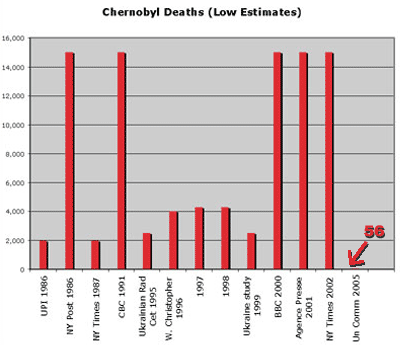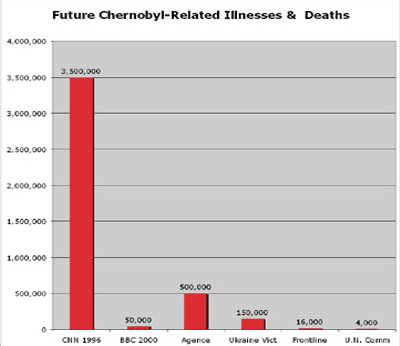November 6, 2005]
(...) Some of you know I have written a book that many people find controversial. It is called State of Fear, and I want to tell you how I came to write it. Because up until five years ago, I had very conventional ideas about the environment and the success of the environmental movement.
The book really began in 1998, when I set out to write a novel about a global disaster. In the course of my preparation, I rather casually reviewed what had happened in Chernobyl, since that was the worst manmade disaster in recent times that I knew about.
What I discovered stunned me. Chernobyl was a tragic event, but nothing remotely close to the global catastrophe I imagined. About 50 people had died in Chernobyl, roughly the number of Americans that die every day in traffic accidents. I don’t mean to be gruesome, but it was a setback for me. You can’t write a novel about a global disaster in which only 50 people die.
Undaunted, I began to research other kinds of disasters that might fulfill my novelistic requirements. That’s when I began to realize how big our planet really is, and how resilient its systems seem to be. Even though I wanted to create a fictional catastrophe of global proportions, I found it hard to come up with a credible example. In the end, I set the book aside, and wrote Prey instead.
But the shock that I had experienced reverberated within me for a while. Because what I had been led to believe about Chernobyl was not merely wrong—it was astonishingly wrong. Let’s review the data.

The initial reports in 1986 claimed 2,000 dead, and an unknown number of future deaths and deformities occurring in a wide swath extending from Sweden to the Black Sea. As the years passed, the size of the disaster increased; by 2000, the BBC and New York Times estimated 15,000-30,000 dead, and so on…
Now, to report that 15,000-30,000 people have died, when the actual number is 56, represents a big error. Let’s try to get some idea of how big. Suppose we line up all the victims in a row. If 56 people are each represented by one foot of space, then 56 feet is roughly the distance from me to the fourth row of the auditorium. Fifteen thousand people is three miles away. It seems difficult to make a mistake of that scale.
But, of course, you think, we’re talking about radiation: what about long-term consequences? Unfortunately here the media reports are even less accurate.

The chart shows estimates as high as 3.5 million, or 500,000 deaths, when the actual number of delayed deaths is less than 4,000. That’s the number of Americans who die of adverse drug reactions every six weeks. Again, a huge error.
But most troubling of all, according to the UN report in 2005, is that "the largest public health problem created by the accident" is the "damaging psychological impact [due] to a lack of accurate information…[manifesting] as negative self-assessments of health, belief in a shortened life expectancy, lack of initiative, and dependency on assistance from the state."
In other words, the greatest damage to the people of Chernobyl was caused by bad information. These people weren’t blighted by radiation so much as by terrifying but false information.
[by Fear, Complexity, & Environmental Management in the 21st Century, © 2005 Constant c Productions, Inc. All rights reserved]

No comments:
Post a Comment